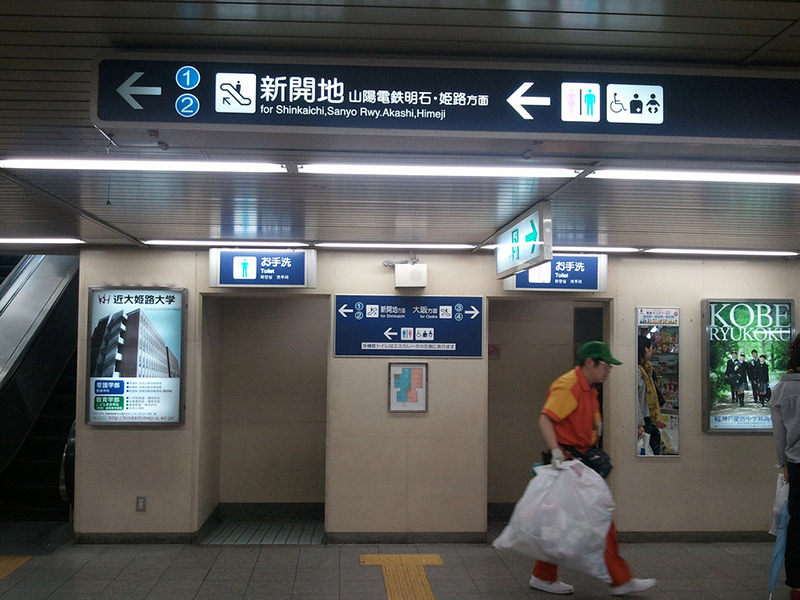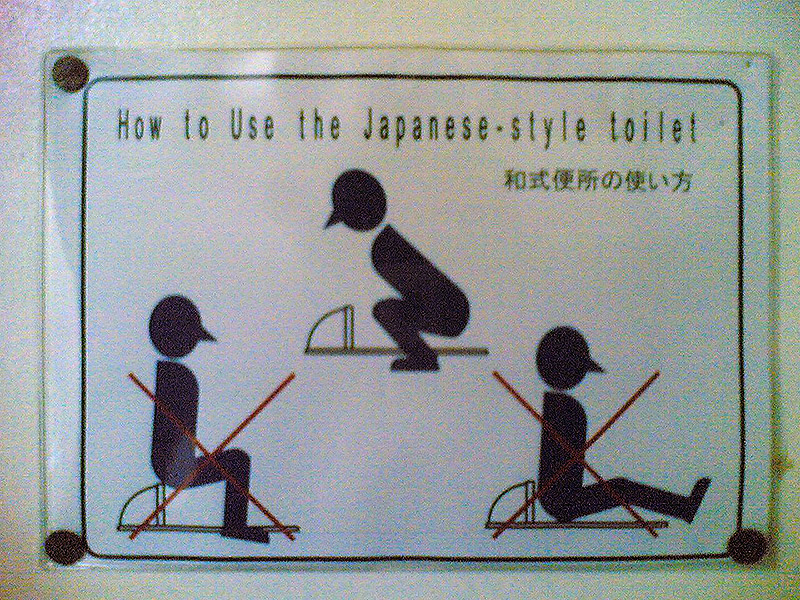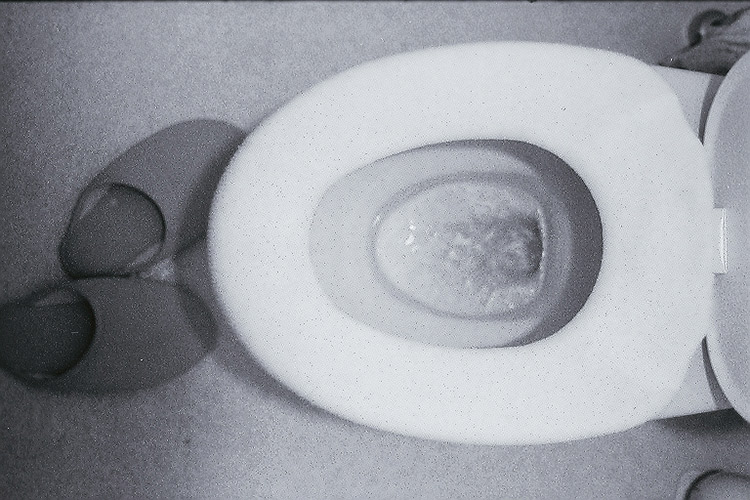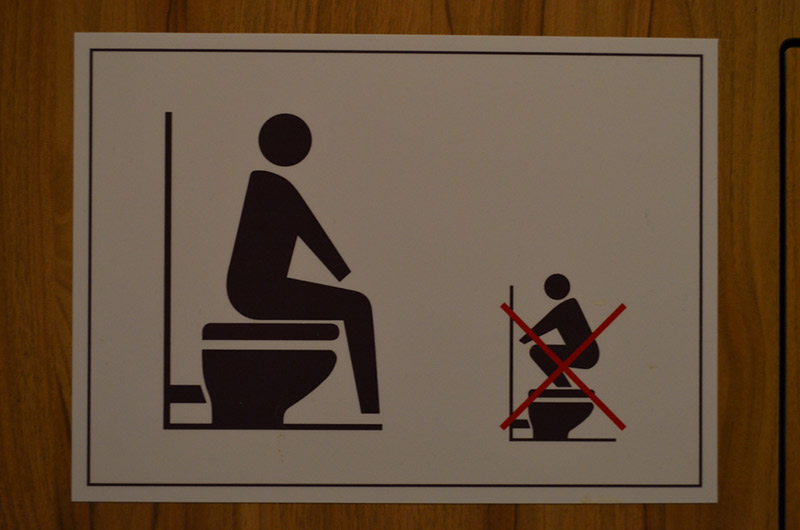I’m sure most of you are familiar with the wondrous Japanese toilet, especially since Tofugu has written before about some of the specialness that is the Japanese potty. However, no matter how much you’ve read, you might find yourself unprepared with the reality of trying to use a Japanese toilet. Thus, I’m going to walk you through where to find the restroom in Japan and some of what might be in store for you once you’re inside.
So let’s say you’re in Japan, and you find yourself in need of the facilities. You’ll reliably find restrooms in department stores, other large stores, large facilities (e.g., the Tokyo International Forum), and museums or other tourist facilities. You can usually also find restrooms in restaurants and transportation facilities like train stations. And speaking of transportation, bathrooms are generally available on long-distance trips (i.e. on trains and some buses), but not necessarily on shorter distance subway trains and the like. So how do you choose which facility to give your “business” to? Personally, I recommend avoiding outdoor tourist attractions and transportation stations – my worst experiences with unpleasant bathrooms have been at these locations. My best experiences have been at department stores and other large commercial facilities. Keep in mind that if you’re disabled or otherwise need assistance, you’ll need to pick your facilities carefully — and allow plenty of time to do so — as Japan is far from barrier-free.
Asking About The Bathroom

Taking our hypothetical Japanese visit a step further, let’s assume you’re at Mitsukoshi, a large department store, getting your shop on, when you realize that the six cups of tea you drank at the sushi restaurant is catching up to you. You’ll probably find signs indicating where the restrooms are, but if you can’t find any, you can just ask where the restroom is. You want to say something along the lines of:
- すみません、トイレはどこですか?
- Excuse me. Where is the restroom?
“Toire” should work, but a Japanese bathroom can also be referred to as “otearai”, “keshoushitsu”, or “benjo.” If you’re not having any luck with “toire”, try subbing in one of these other words in its place. If that doesn’t work, just say all the words in succession without any of the other stuff. When you gotta go, you gotta go.
Enter The Bathroom

Once you do find the restroom, don’t worry: although you’ve probably heard stories about Japanese bathroom etiquette and how you’ll horrify people by wearing shoes into the restroom, the vast majority of public facilities will not expect you to change into bathroom slippers. If you’re at an inn or someone’s home, or if you see plastic/rubber slippers inside the bathroom, take your shoes off and put on the slippers (they’re there for a reason, after all). If there are no slippers then your shoes should be just fine.
Using The Toilets
Inside the restroom, you’ll probably encounter a mix of Western toilets and traditional Japanese toilets. Rarely, you’ll find only the (apparently) intimidating Asian squat toilet. For a moment, let’s pretend you’re in the countryside, and the only facility in front of you is said squat toilet. This is the kind of toilet that tends to give Westerners the most pause, but the process here is pretty simple. Face the hood of the toilet, lower your pants (or lift your skirt), squat, and take care of things.

As intimidating as the hood may appear, being close to it is important; what you definitely don’t want to do is miss the toilet, which can happen if you don’t get close enough to the hood. Sometimes there is a bar or other plumbing that you can hold onto to help your balance while squatting or standing up. Once you’re done, you flush – there shouldn’t be any strange buttons. Congratulations on successfully defeating the squat toilet!

What you are more likely to encounter in restrooms are Western style toilets, which come in two flavors: plain and Enterprise. I feel confident you can manage the plain toilet on your own. But let’s imagine the very common scenario where you roll into the bathroom and find a throne complete with an electronic panel with fifteen buttons. The common Japanese term for this style of toilet is the “washlet,” but I like to call this the Enterprise, because the quantity of buttons sometimes makes it feel like you’re piloting a starship.

That panel can be intimidating, so let’s walk through some of the more common buttons that you’ll see:
- “ビデ” activates the bidet
- “おしり” activates the bidet nozzle, but angles it toward your bottom
- “水勢” adjusts the pressure of the bidet functions
- “音姫”, literally the “sound princess”, makes a noise to conceal the sounds you’re making
- “音量” adjusts the volume of any music the toilet makes
- “止” stops whatever the toilet is doing
- “乾燥” activates a blow dryer to help you out
- “強” makes the spray stronger
- “弱” makes the spray weaker
- “ノズル” changes things related to the bidet nozzle
- “前” moves the nozzle forward
- “後” moves the nozzle backward
- “脱臭” activates a deodorizer
- “暖房便座” warms the seat (and is amazing)
- “マッサージ” activates a massaging function
- “流す” flushes the toilet
- “準備中” indicates whether the toilet is in a power-saving mode
I’d love to tell you that this is an exhaustive list of the things you might see on a Japanese toilet, but I’d be lying to you. Knowing these will go a long way to helping you get by, but you’ll see lots and lots of variations.
Flushing & Washing

So, you’ve finished your business, used the bidet, and had the toilet seat dry you off (how decadent!). Now you need to flush. You look at the panel of buttons, but there’s no flush button. Take Douglas Adams’s advice and don’t panic. First, stand up and examine the toilet (note that standing may cause the toilet to flush: success!). Even complicated Enterprise toilets frequently have a standard chrome flush handle like you’re used to, although the handle might be smaller or it might be in a not-so-obvious place. But… let’s say you don’t find a flush handle. Your next move is to look for a sensor to cover up that will flush the toilet for you. If there’s a sensor, it might be on the back of the toilet, or it might be near the panel. If you can’t find a sensor, my final piece of advice (and one that should be your last resort) is to start pushing any buttons that you don’t recognize. I recommend doing this last, because occasionally these buttons summon a person to the bathroom: not the best end to your Enterprise experience.
Now that you’ve finished with the toilet, you need to wash your hands. You exit the stall and you’re looking for a place to wash up, and… wait, let’s back up. For some Japanese toilets, you can omit the step of exiting the stall, because there will be a faucet on top of the toilet. I’ve never seen one with soap, but if you carry your own soap, you have the option of washing your hands on your toilet at this point. If that freaks you out too much, you’ll need to find a sink. This part is really easy, because sinks generally look the same as they do back home.
The most complicated setup I’ve encountered involved a fully automated sink where you had to wave your hand in one place for soap, another for water, and then somewhere else for the hand dryer, all in a row. So, if there’s no obvious way to turn on the tap, be prepared to look silly and wave your hands around. Soap is frequently, but not always, provided in public restrooms in Japan. Even when soap is provided, my experience has been that a lot of the soap is thin and doesn’t smell nice. Between the occasional lack of soap and the not-so-great quality of some of it, my suggestion is to carry soap if you’re going to be out and about in strange places. You’ll probably also want to carry some sort of cloth to dry your hands with and maybe a bit of toilet tissue as well. Hand dryers or paper towels are common but not universal. I read a lot of guidebooks before my first trip to Japan, and it was pretty common for them to act like toilet tissue isn’t provided anywhere in Japan. As a result, I carried a travel roll of Charmin (they do make such a thing) with me all over Japan, but I never had a reason to use it. Having said that, carrying a small packet of tissue with you just in case isn’t a terrible idea; just don’t worry that you’re going to have to use it everywhere. Or, you can be like a lot of Japanese and carry a handkerchief or small towel around with you to dry off your hands.
Congratulations, Toilet Graduate!

Now that you’ve read this, you are fully equipped to carry out bodily functions in Japan. If you’re curious about just how wacky Japanese toilets can be, you should check out these:
Oh and we can't forget something for the kids!
In short, Japanese potty options encompass things like jeweled toilets, poop-powered motorcycles, and toilets that examine your output for medical information. Useful, but perhaps a little creepy. If you’re in Tokyo and you want to tour the toilets of the future, head over to Toto’s showroom in Shinjuku. Toto is the pillar of Japanese toilet creations; they developed the poop motorcycle and trademarked the term “washlet”, to give you an idea of how important they are. Their showroom contains the latest and greatest in Japanese bathroom fixtures.
Whether you visit the Toto showroom, conquer your first squat toilet, or accidentally summon a helper to your stall, I hope you have great experiences with your Japanese facilities. Good luck out there!
